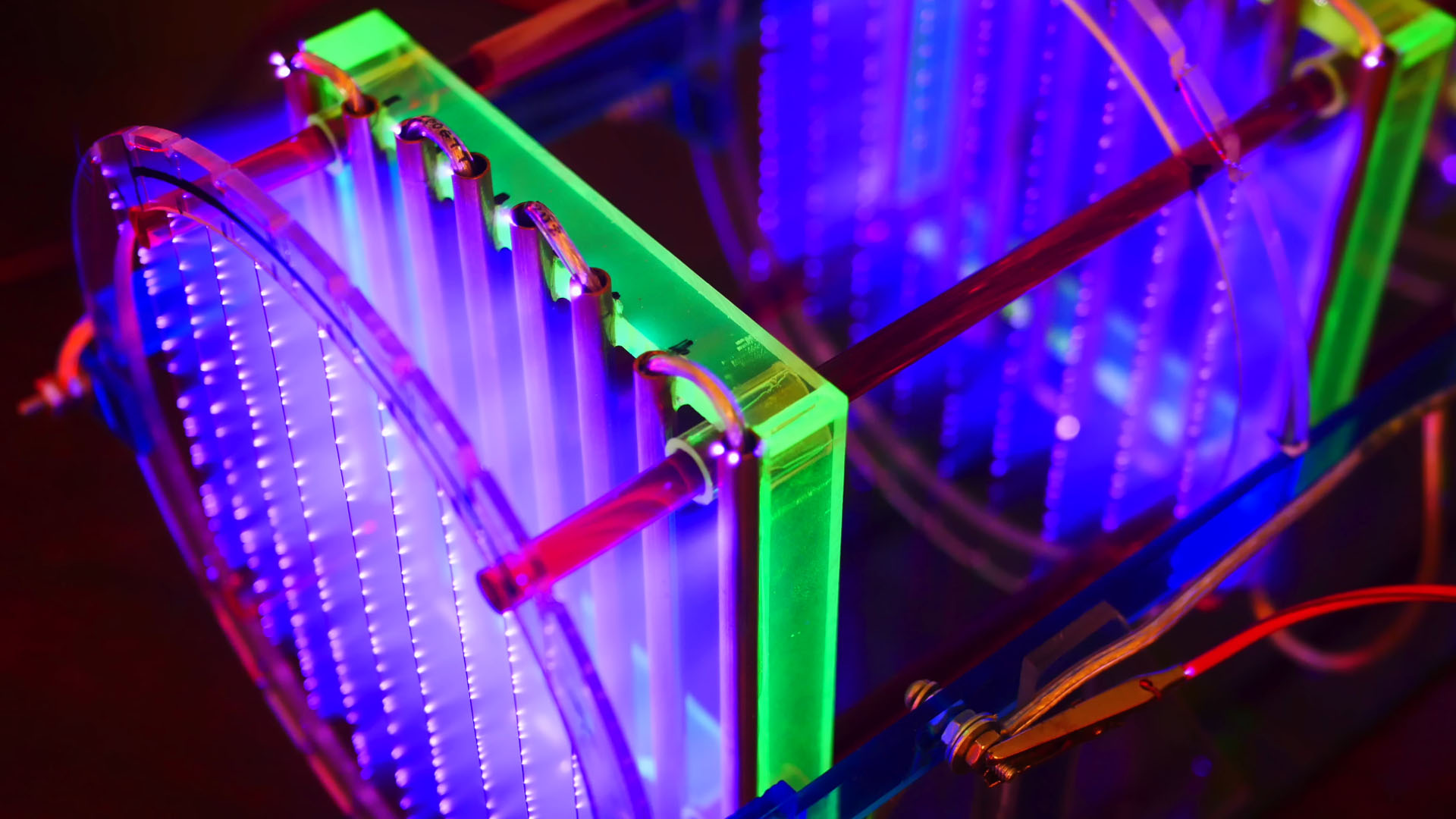

You don’t see many ionic thrusters out in the world these days. The high-voltage devices are interesting pieces of technology, but they aren’t all that relevant to our normal lives. They’re gradually becoming more mainstream, though, as Jay Bowles—the YouTuber behind the Plasma Channel—shows what they can do. Recently he made an ionic thruster that not only looks amazing in the dark, but also produces a fair amount of thrust.
Ionic thrusters are not in the same league as something like a ducted fan or a jet engine when it comes to producing a big quantity of thrust. They do, however, have a few strengths that Bowles demonstrates. The first is their simplicity. The ionic thruster Bowles built is basically just a bunch of wires supported by a frame. This is combined with some circuitry necessary to enable the extremely high voltages required to run the device. This simplicity makes them even more attractive from a reliability standpoint than something like an electric motor driving a propeller.

Despite looking really cool in the dark, the downside of these devices is that their thrust-to-weight ratio is pretty poor. That’s fine on a satellite floating in the vacuum of space—the most common application for ionic thrusters—but not so good for something like an aircraft that’s subject to wind resistance and gravity. Bowles’ device produces just 22 grams of thrust despite the thruster itself weighing around 490 grams. That’s also not accounting for the bulky power supply.
He insists it can be made lighter as his initial rig is made out of thick sections of acrylic. Even if the weight is shaved in half as he says is possible, the efficiency still wouldn’t be great. A drone utilizing this technology would need to have a thrust-to-weight ratio better than 1:1.


But 22 grams of thrust is promising still. The simplicity of ionic thrusters makes them attractive enough to see a fair amount of development for use in small-scale aircraft. Back in 2018 MIT developed a working model plane powered by ionic thrust. It was only capable of flying indoors and incredibly slowly, but the appeal of an aircraft with no moving parts is huge. If talented hobbyists like Bowles can get a reasonable level of results out of the technology, there’s no doubt researchers are making even greater strides. Plus, who doesn’t like engines that look cool? Sign me up.
Got a tip or question for the author? Contact them directly: peter@thedrive.com